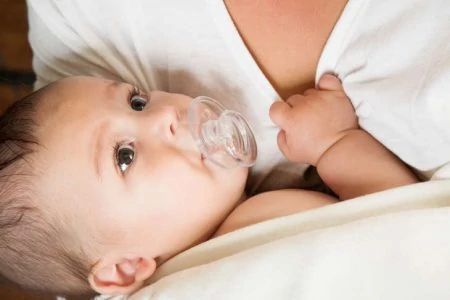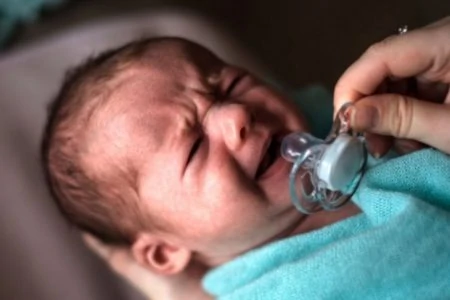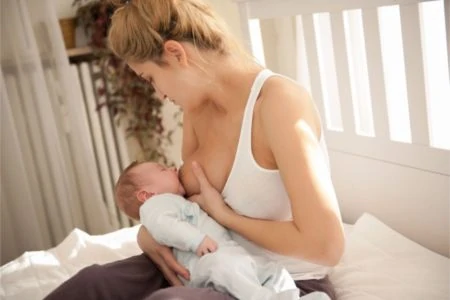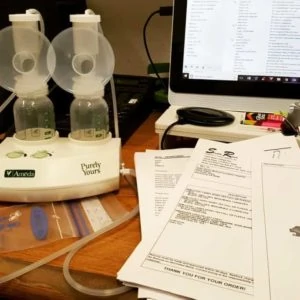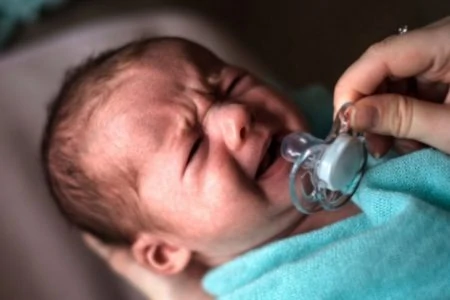Do you wonder if you should give your baby a pacifier when you’re breastfeeding? Have you heard horror stories about babies who had nipple confusion or started refusing the breast after pacifiers were introduced?
With careful planning, your baby can learn to appreciate the joys of both the breast and the pacifier. You don’t have to use just one or the other — you can have the best of both worlds.
Your baby will be able to use a pacifier to self-soothe occasionally, so you’ll have less crying to contend with. But you won’t risk your baby shying away from breastfeeding because they prefer sucking on an artificial nipple.
Key Takeaways
- It is possible to give a pacifier to a breastfed baby without negatively impacting breastfeeding.
- Pacifiers have benefits like reducing the chance of Sudden Infant Death Syndrome, helping babies self-soothe, and providing a safe way for babies to indulge in their love of sucking.
- Pacifiers have downsides such as the possibility of earlier weaning, a higher risk of thrush, more ear infections, choking hazards, dental problems, and difficulty gaining weight.
- It’s best to wait until the baby is at least 1 month old before introducing a pacifier.
Should Breastfed Babies Avoid the Pacifier?
You might wonder why any parent would give their child a pacifier if it means there’s a risk of interfering with breastfeeding. There are several advantages to pacifier use.
- Cuts down on the chance of SIDS: Sudden Infant Death Syndrome is one of the biggest fears parents have. Although experts aren’t sure why it works, babies who suck on pacifiers while sleeping have less risk of dying from SIDS (1).
- Gives them a way to self-soothe: Babies can struggle to handle their emotions, but it’s a skill they’ll eventually have to learn to master. Pacifiers can help them calm down, which means they will help you calm down as well.
- Lets them indulge in their love of sucking: As all parents know, babies love to suck on things. A pacifier is a safer option than other items your baby may find lying around.
Disadvantages of Pacifiers for Breastfed Babies
Not everything about pacifiers is sunshine and rainbows. There are some downsides to them that you might want to consider before you decide if your baby will use one.
- Earlier weaning: Some studies show babies who use pacifiers will start to wean from the breast sooner than babies who don’t use pacifiers. The pacifiers satisfy the baby’s urge to suck, so they don’t feel the need to go to the breast for that.
- Bigger risk of thrush: Pacifier users are more likely to get thrush, an oral yeast overgrowth. That thrush can transfer to your nipples during breastfeeding.
- May lead to more ear infections: Ear infections are a common problem in babies, and pacifiers may cause your baby to end up with more of them (2).
- If they’re in poor condition, they can be a choking hazard: You should always inspect a pacifier before handing it to your baby. If it shows any signs of cracking or weakness, throw it away so your baby can’t choke on any broken pieces.
- Problems with your baby’s teeth: Don’t let your baby use a pacifier too long because it can cause future dental problems. Around the age of 2, you should break your baby’s pacifier habit (3).
- Failure to gain weight: If your baby is having difficulties gaining weight, you should cut back on how often you let them use a pacifier. You want to save that precious sucking time for your breast when your baby will get milk and hopefully start gaining some extra ounces and pounds.
When to Introduce a Pacifier to a Breastfed Baby
Timing is everything when you introduce your breastfed baby to a pacifier. You don’t want to do it too soon.
If you introduce the pacifier before your baby has had time to learn to breastfeed, you’ll be setting both of you up for failure.
1 Month+
What Kind of Pacifier Works Best for a Breastfed Baby?
Not all pacifiers are great for breastfed babies. To keep your baby interested in the breast, steer clear of pacifiers with bulb-style nipples. Those may turn them into lazy suckers and won’t work well for a breastfed baby who has to work hard to get any milk from your breast.
If they become lazy suckers, breastfeeding will become troublesome and unproductive for both you and your baby.
Pro Tip
What Time of Day Should I Let My Baby Use a Pacifier?
It’s best if you don’t use pacifiers before breastfeeding sessions. Breastfeed first, and then, if your baby still wants to suck, you can give them a pacifier.
If you’re trying to limit the use of pacifiers, only offer them to your baby at night to help protect from SIDS.
And once you see that pacifier fall out of your baby’s mouth, you should put it away.
There’s no need to try to put it back in your sleeping baby’s mouth. That can encourage pacifier dependence.
FAQs
You Can Find a Way to Make it Work
While giving your breastfeeding baby a pacifier can present challenges, you can successfully pull it off with a little awareness and know-how.
Choose carefully when you first introduce the pacifier, and consider what times of the day you will offer it to your baby.
